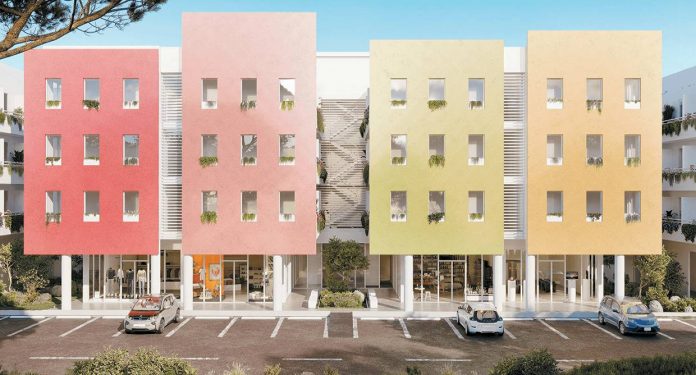Mass housing remains one of the challenges of every administration in the country. It requires a multi-disciplinary approach to solve this complex problem. There is no silver bullet to this lingering problem but as an architect, the design perspective is most interesting to me.
The value of land is at the core of every mass housing issue. In highly developed countries such as Italy and Singapore, mass housing projects in high-value cities would involve the construction of high-rise towers to maximize the value of the land.
Planners and developers would approve higher and higher designs to accommodate more beneficiaries in a given land area, drastically increasing the “FAR” or floor to area ratio.
FAR is the measurement of a building’s floor area in relation to the size of the lot that the building is located on.
There’s a whale of a difference when you’re developing affordable housing in emerging markets, like the Philippines especially when they’re done in urban areas where the price of real estate is high, and at the same time the product should be kept within reach of the beneficiaries’ purchasing power.

Building high-rise developments is more costly, and that cost should be passed on to the end-users of mass housing in the form of higher costs.
In this case, the options of government planners and developers are limited. As much as they would like to do high-rise, their hands are tied because it would entail higher cost in the construction of the housing project.
In fact, a high-rise building is more costly because of several additional features that it must have such as elevators, preventive fire systems, additional stairs, high amount of steel and cement for the structures etc.
One of the solutions to tackle this challenge lies in architectural typology. What format for housing would address the challenge best?
A good option is the mid-rise buildings or “walk up buildings” which are buildings not higher than four-stories. This is the threshold beyond which structures would incur the higher costs of high-rise style building.
Going mid-rise is a good compromise between horizontal and vertical housing projects. Going all out horizontally will require a large land footprint which is not always appropriate for the area, especially if it’s urbanized and it is not really sustainable in terms of land use. On the other hand, pursuing a high-rise vertical will entail bigger development costs.
On the technology side, the introduction of prefabrication technology is a welcome development for the affordable housing program. Using prefab materials for housing projects could reduce the cost as the majority of the labor will be finished in the factory.
To make this technology advantageous, a certain economy of scale must be met otherwise it will be advisable to use “casted in place” technology to build.
Philippines, local materials and local labor can be utilized to add extra efficiency in construction costs.
If you go high tech, you will obviously have an expensive project. Meanwhile, using simple but tested technologies would benefit a lot of people.
This would enable new housing projects to meet society’s goals of making home ownership more accessible to all.
If you like this article, share it on social media by clicking any of the icons below.
Or in case you haven’t subscribed yet to our newsletter, please click SUBSCRIBE so you won’t miss the daily real estate news updates delivered right to your Inbox.
The article was originally published in The Philippine Star – Property Report PH and written by Romolo V. Nati.







More Stories
Vista Land Celebrates 50 Years with Sandiwa: An Event Honoring Leadership, Legacy, and the Filipino Dream of Homeownership
Vista Land Celebrates Love Month in Ilocos Region
Vista Land Bridges Cebuano Heritage and Progress with Valencia by Vista Estates